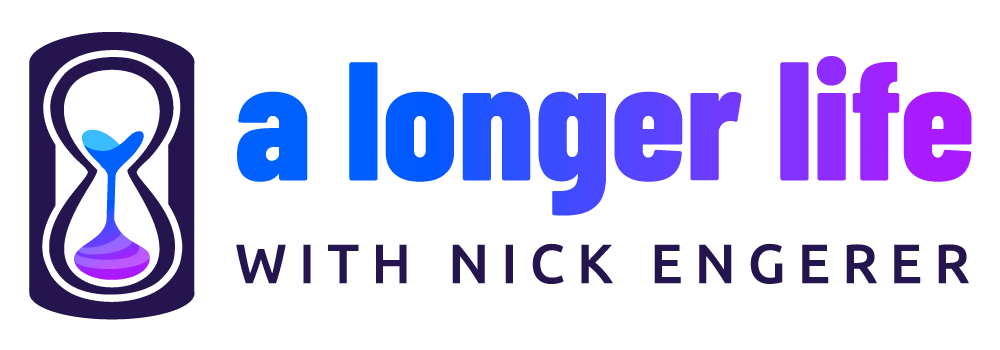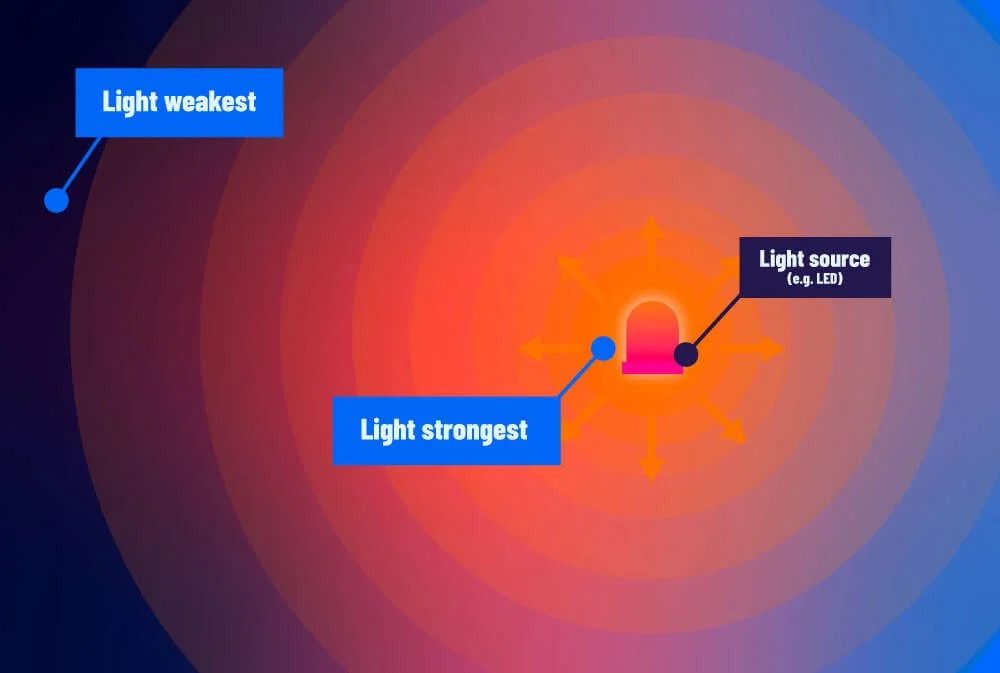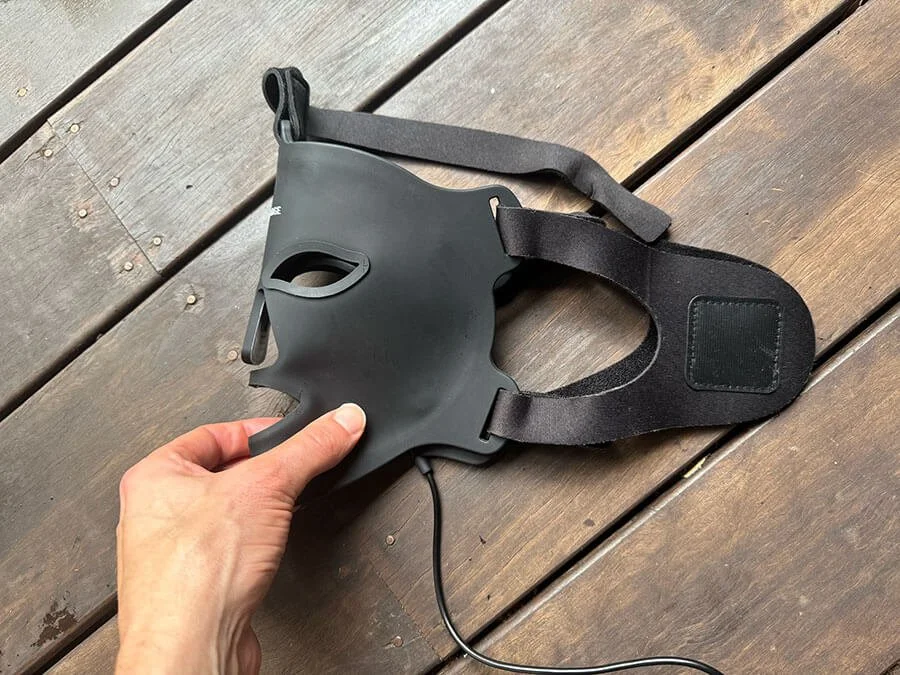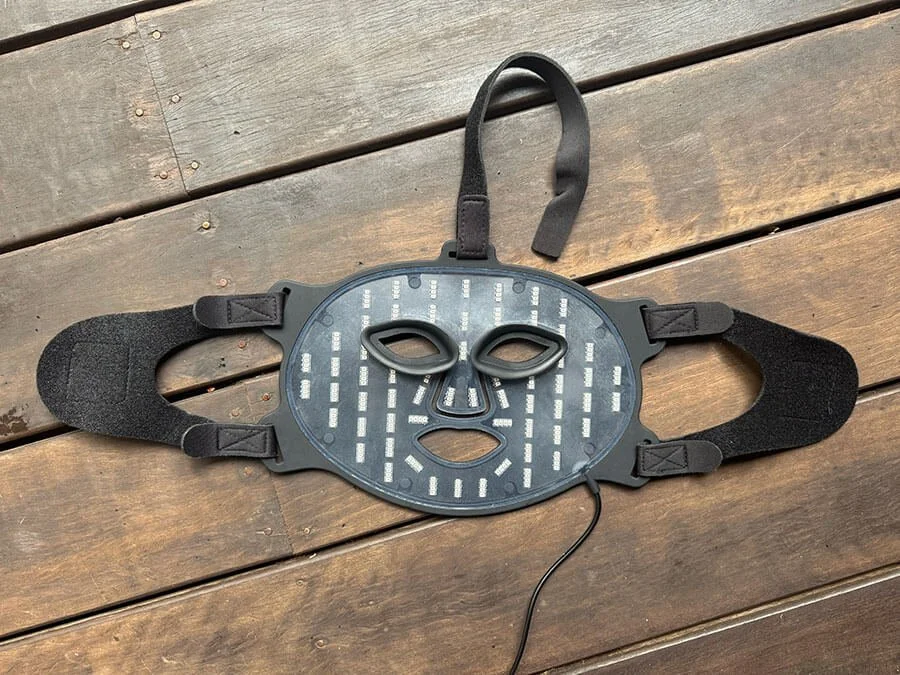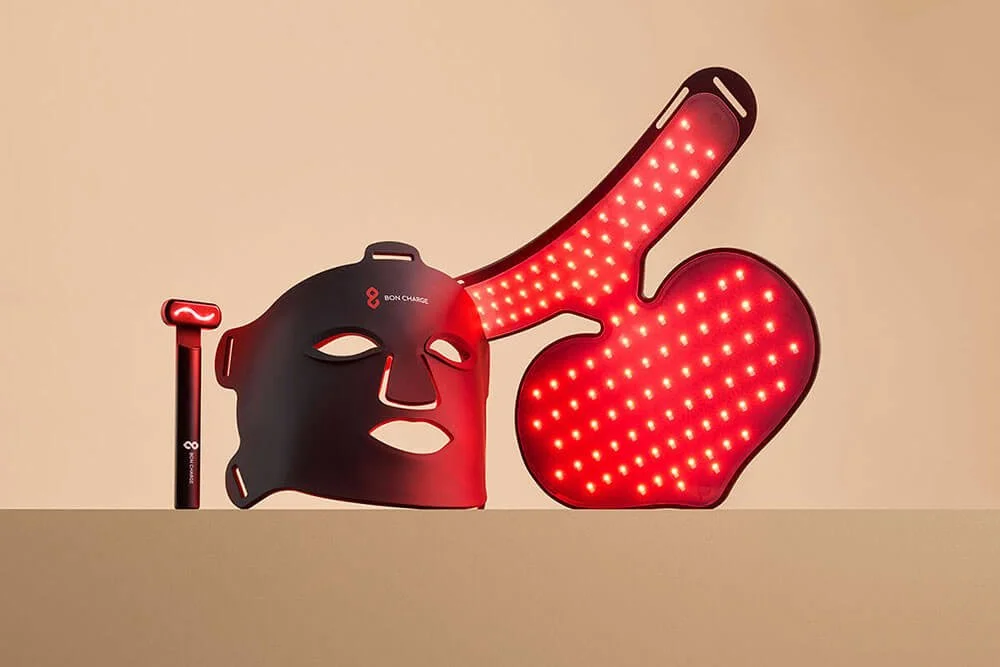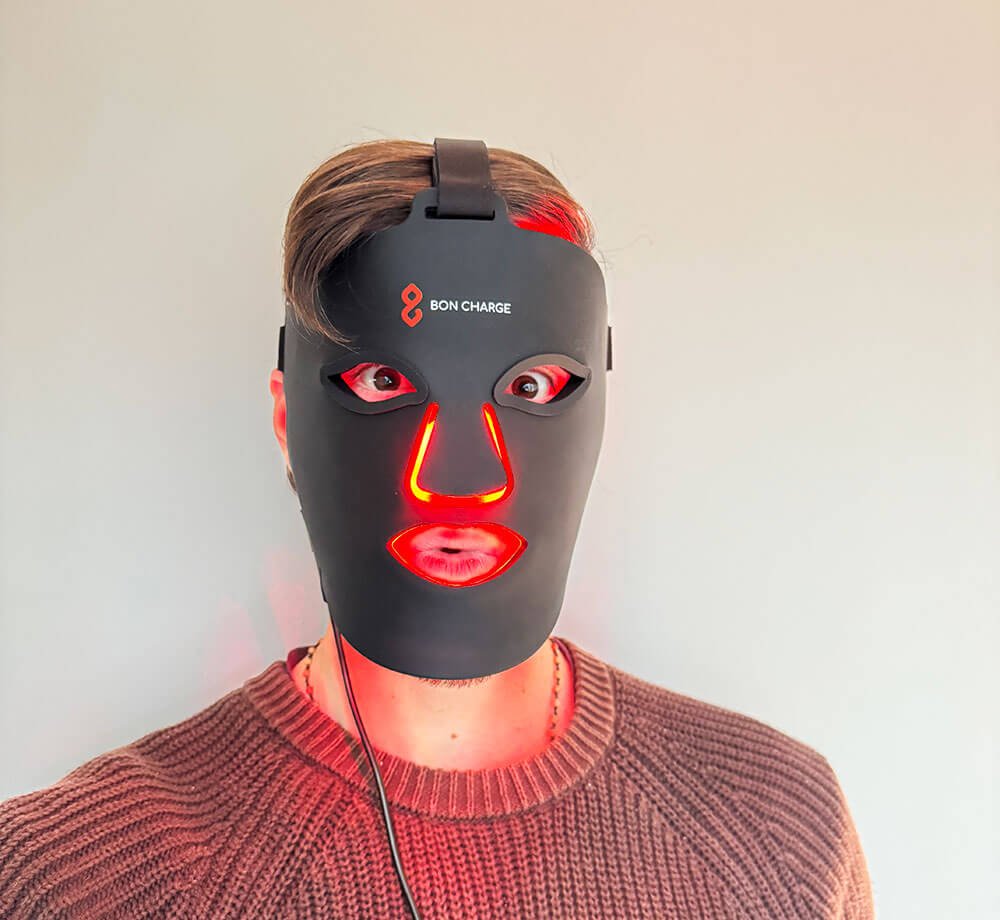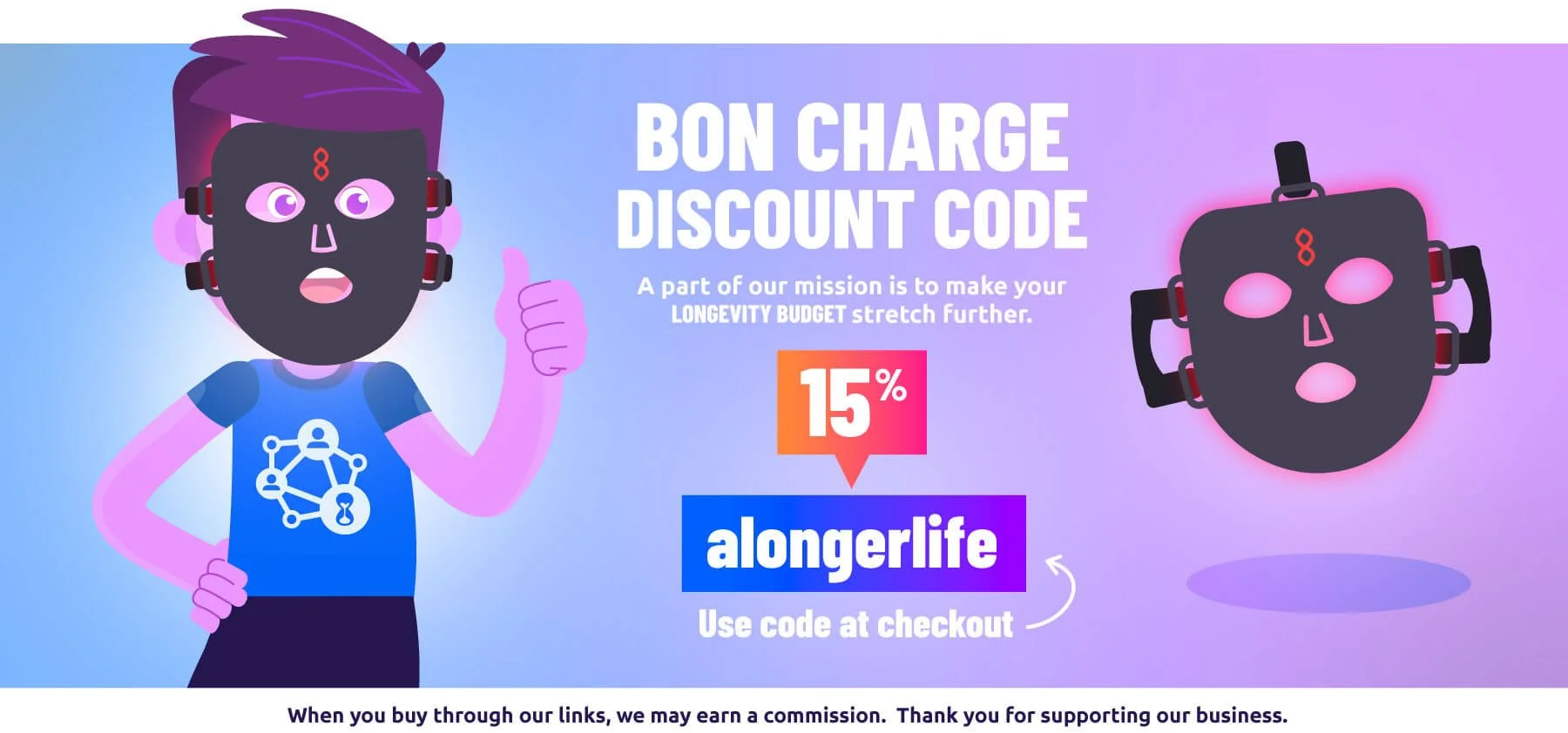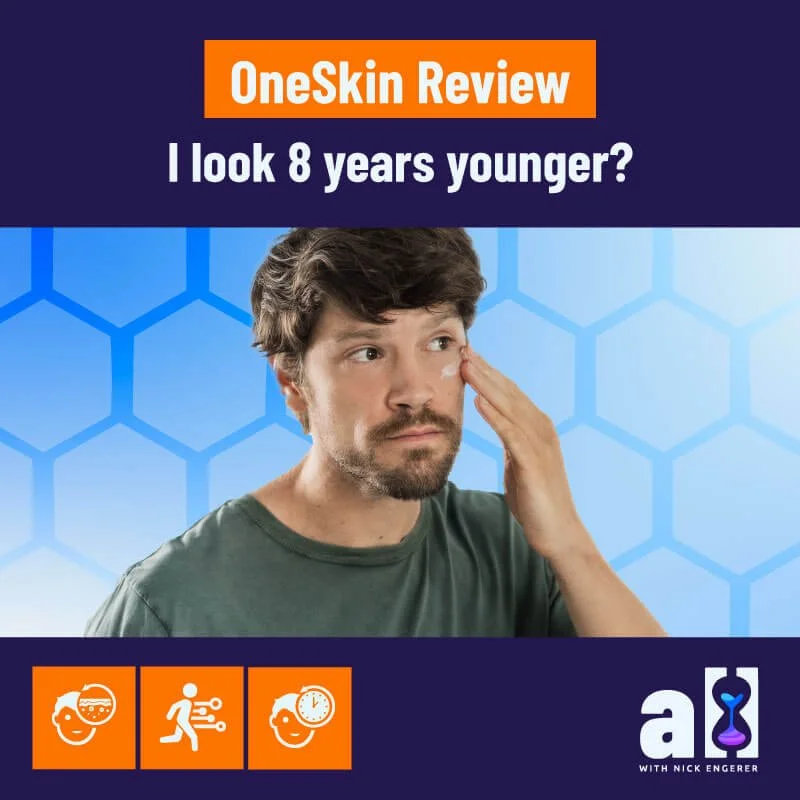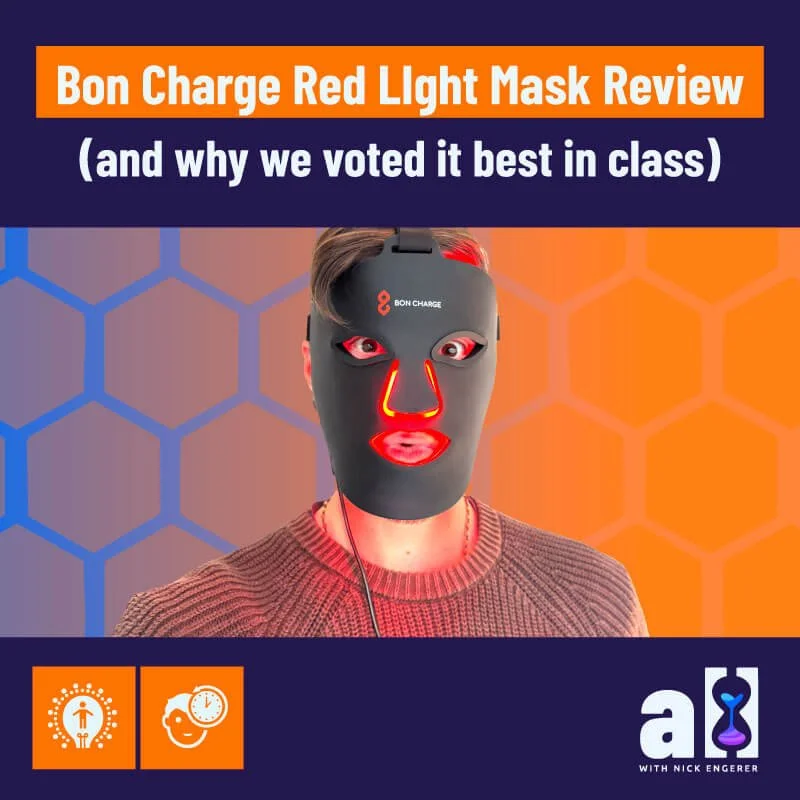Best Red Light Therapy Mask Review 2025: Top Picks for Skin Health & Looking Younger
How to choose the best red light therapy mask
Do Red Light Therapy Masks Actually Work?
The answer is - it depends.
The science on this is actually settled - thousands of research articles on the benefits of red light, hundreds using randomised controlled trials, more than a hundred quality research articles on the benefits of red light on facial skin.
Why it ‘depends’ relies completely on the quality of the red light therapy mask that you choose. Moreover, a lower quality mask may still ‘work’ but you may need to wear it for 60 minutes to get the benefits a high quality mask would provide in just 10 minutes.
This complexity is just starting to scratch the surface of the relatively overwhelming nightmare now facing the average consumer when they decide they’d like to purchase the best red light therapy mask.
They’ll often start with a web search: “What is the best red light therapy mask?” or “What is the top rated red light therapy mask?”.
Lo and behold, instant answers from apparently reputable sources - the New York Times, Forbes, Vogue.
Or they might turn to social media, where claims such as ‘this is the best red light therapy mask, hands down’ or ‘I tried it myself, and this is the top rated red light therapy mask’.
But both sources of information are biased and flawed. Journalists know next to nothing about light or radiation. Influencers are being paid behind the scenes and have no real way to demonstrate before and after results.
This is exactly why I decided to undertake this review - with my Ph.D. in studying solar radiation, I understand light and the science behind it. And I notice the important details most everyone else is missing!
In this red light therapy mask review, I will help you understand the basics of ‘irradiance’ and make an informed decision.
Nick holding various red light therapy masks
What “The best red light therapy mask” reviews are all missing...
The red light therapy mask market is absolutely booming. Over the past five years, it has proven difficult to keep up with the offerings.
Things have changed a lot since I bought my first mask - an Omnilux - back in 2020 (And before you jump off this post to go buy one - no Omnilux is not in my list of recommended red light masks).
These masks are also remarkably convenient. You simply charge the controller, fit it to your face, power it on and continue one with your day. Perhaps you even ‘stack’ red light therapy mask use in with another wellness boosting activity such as meditation or some light stretching.
When it comes to the aesthetics of your face, “red light therapy masks” make some fairly impressive claims. The internet and social media are awash with before and after photos of great success with pigmentation, fine lines, skin renewal and skin clarity. The fact is - if done right, red light therapy delivered to the face can produce profound benefits in skin appearance.
But, the key work in that statement is “if”. In order to maximize these benefits and not waste your money or perhaps more importantly your time, we need to get quite specific about how red light therapy works on facial skin.
Facial skin is quite unique, most notably because it is quite thin as compared to the skin on the rest of your body. At only around 0.5 to 2mm of thickness, this means that lower levels of light intensity are suitable for stimulating the aesthetic benefits, which is why a simple mask can be so effective.
Facial skin is also very exposed to UV damage and other environmental stressors (e.g. toxins, hormone disruptors, parabens) and needs extra support to remain healthy - this makes red light ‘masks’ particularly useful.
You cannot pick the best red light therapy mask without understanding this:
We simply cannot move ahead with a proper review of red light masks, without introducing an absolutely fundamental concept of light/radiation - irradiance, sometimes also called ‘radiance’ or more simply ‘intensity’. It is measured in rather funny looking units mW/cm2. This is the power (mW is milli-watts) over a given area of your skin (cm2).
To be in line with the most solid science - the intensity of light (irradiance) should cross the 20 mW/cm2 threshold at minimum. Optimal levels appear to be above 30mW/cm2 with further benefits up to the 40 to 50mW/cm2 range. There is also of course your individual biology at play - if you have sensitive skin, you may need to start with lower intensity and work upwards as your skin adapts.
A demonstration of irradiance showing light getting weaker the further it travels from the light source (the LEDs)
Importantly this is the intensity of light (irradiance) that needs to be received by the surface of your skin in order to get the many benefits outlined in the scientific research.
This is a very important point to understand before we move forward. Light weakens exceptionally quickly as it travels from its source. In this case, the LEDs in the red light therapy mask.
In radiation, this effect is known as the ‘inverse square law’, but I won’t bore you with the science. What you need to understand is that any gap between the light source and your skin will reduce the effectiveness of the light therapy treatment.
The best mask that will fit your face perfectly
(the finger test)
Some very simple math using that inverse square law can demonstrate this - Most devices on the market have an irradiance of 30mW/cm2, which is just above the recommended threshold of 20mW/cm2.
However, at just 1 centimeter of distance (just under half an inch), the irradiance received by the skin drops to a mere 7.5mW/cm2 - which may mean that no therapeutic benefits are delivered at all!
In fact, at just 1cm of distance, you’d need to use the mask for four times as long (40 minutes instead of 10 minutes) to receive the same amount of light energy - and there isn’t much science to back up that these lower levels of irradiance still create the so called ‘anti-aging’ benefits (i.e. reducing fine lines, improving collagen density).
The key takeaway points here are that for the aesthetic benefits you most likely want, you need:
- Enough Intensity: A red light mask should be powerful (irradiance in the 40-50mW/cm2 range)
- The Right Wavelengths of Light: It should focus on just red and near-infrared (NIR) wavelengths (this means better quality of light)
- Correct Fit of the Mask: The fit of the mask matters, almost as much as the quality of the light it produces (irradiance arriving at the surface of the skin)
Challenges in selecting the best red light therapy mask for you
If you feel like you’re ready to head off and buy a red light mask on your own now - I assure you that you are not!
Even with the above information, you’re still prone to many pitfalls as you navigate some of the most confusing marketing messaging I’ve seen in the cosmetic industry (and that is saying something!). Hang with us for just a few more (relatively painless) paragraphs, and you’ll be sure to pick the top red light mask!
Here are some challenges that the red light therapy mask market presents to consumers:
A general ignorance of the basic parameters of light/radiation. Most do not understand the terms ‘wavelength’, ‘irradiance’ or ‘infrared’ yet these are incredibly important for making informed decisions.
A lack of important information at the point of purchase (e.g. the intensity of light emitted by the mask), which is often hidden in FAQs or in technical specifications, or in many instances not specified at all
Confusion about the differences between ‘LEDs’, ‘diodes’ and ‘bulbs’, where ‘more’ seems to be ‘better’ (hint: it is not).
Tip: Remember that it is the intensity of the right wavelengths of light arriving at the surface of the skin that matters (irradiance & fit)
Widely varying technologies behind the light source in the masks, with a proliferation in unnecessary brand word technologies (e.g. ‘triwave’ or ‘iQLED’).
The incorporation of additional wavelengths of light in the mask to make them appear ‘better’ than the competition, (adding ‘yellow’, ‘green’ or ‘purple’ light - where you only need red and near-infrared)
Side-note: if you have acne issues, blue light may be a helpful addition to your light therapy mask, but we omit this from our review
Ground Rules for Choosing the Best Red Light Therapy Mask
To navigate this ‘wild west’ of red light therapy masks, we first will establish a few reliable ground rules to guide your purchasing behaviour, before we move onto our detailed review of the top market offerings and present our Top 3 recommended masks.
The Bon Charge red light mask U-shaped straps
The inside of the Bon Charge red light therapy mask
- If a red light mask doesn’t clearly specify its irradiance (the intensity of light in mW/cm2) don’t buy it
- If a review article of red light masks doesn’t discuss irradiance, don’t listen to it (they don’t know what they are talking about)
- If a mask includes non Red/NIR LEDs remember two things:
- You only need Red and NIR wavelengths for the aesthetic benefits (more is not better!)
- Adding more colours of light most often reduces the irradiance (and potentially quality) of the Red and NIR light
- Fit matters - perhaps more than anything else
- If a mask doesn’t sit completely flush/flat on your face, you won’t be receiving the rated irradiance/power to the skin. Even just 1 cm gap will drop a “premium” mask's impressive 50mW/cm2 irradiance all the way down to only 12.5mW/cm2 !
- Avoid hard shell style masks. They charge far more, but cannot contour to your face shape like a flexible mask can. More cost for less quality of light because it looks fancier - don’t be fooled.
- The most important non light feature of a mask is therefore its straps. Look for highly adjustable straps which are “U” shaped. A vertical strap from the forehead to the back of the head is also a must have to avoid a gap on the forehead.
The terms “clinically proven” and “FDA cleared” sound impressive, but mean very little in terms of whether the mask will provide you with aesthetic benefits.
Any product which is using the wavelengths of light that are demonstrated to be effective in human clinical trials can claim to be “clinically proven” or “effective”, etc.
“FDA Cleared” is a simple safety check, while this is good, it has nothing to do with efficacy.
A Longer Life Chooses:
The Best Red Light Therapy Mask is… Boncharge
After thorough review, we have chosen the Bon Charge red light therapy mask as the top offering on the market based on the criteria we have explained in this article.
Allow us to elaborate further:
- Excellent Fit: This mask has highly adjustable ‘U-shaped’ straps, which allow many different angles when attaching the straps behind the head. It also has a vertical headstrap which pulls the mask flush with the forehead and removable eye cups
- Optimal Irradiance: At 40mW/cm2 this mask sits right in the optimal zone for irradiance. When combined with the highly adjustable fit, this ensures the minimum required irradiance will be received by all areas of the face.
- Time of Use: With the excellent fit and the higher levels of irradiance, consumers can expect to see aesthetic benefits with as little as 10 minutes use per day.
- Charge Time: Boncharge reports at least 3 hours of use between charges, which is about twice the industry standard
- Single Wavelength LEDs: This red light therapy mask uses dedicated LEDs for single wavelengths (LEDs for red light and NIR are different, red light LEDs do not produce other wavelengths of light, e.g. blue or yellow)
- Optionality: Boncharge red light therapy mask has intuitive control features, and allows the user to change the intensity of the light, turn NIR on/off and adjust the treatment time in 5 minute increments; it can also be paired with a neck & chest mask
- Nose bridge: Boncharge does not use a ‘split’ nose design, meaning the ridgeline of the nose (which receives the most sun damage) receives light therapy
| Product | Irradiance | Wavelengths of Light | Key Features |
|---|---|---|---|
| Bon Charge Face Mask 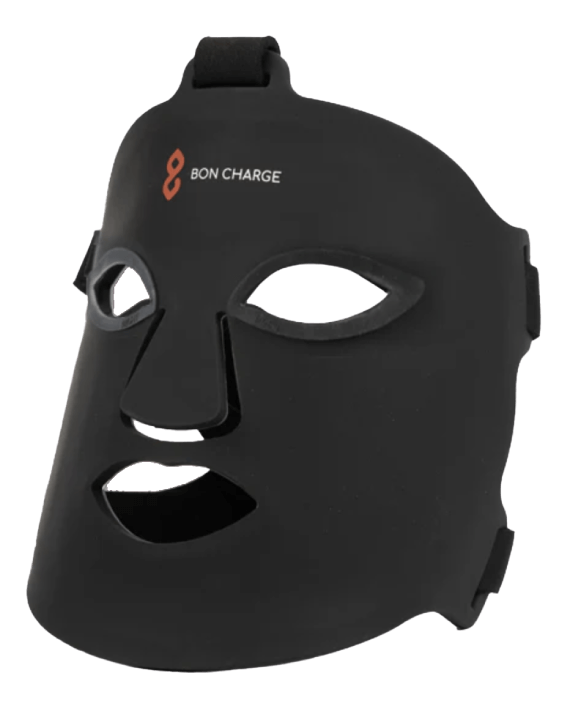 |
40.8 mw/cm2 |
630nm Red 850nm NIR |
* Optimal irradiance intensity * Highly adjustable straps * Vertical face strap * Single wavelength LEDs * Controller optionality |
Red Light Mask Runner-up Category
In our highly thorough review and search for the best red light therapy mask, we found three ‘runner up’ recommendations for those of you who might want an option other than Boncharge.
* All prices in USD
These are NOT the Best Red Light Therapy Masks
(We Don’t Recommend, Here’s Why)
Now for the penultimate prize - our highly thorough review of red light therapy masks which don’t make the cut. We’ve applied the criteria outlined in the introductory section of this post, while also putting price consideration into the mix. This is because one of the biggest issues with many ‘premium’ masks is that they are priced way too high for the ‘differences’ they claim to offer.
If you see a redlight mask that we have missed in this table, please contact us so that we can update our redlight mask review.
| Product (Price in USD) | Irradiance | Wavelengths of Light | Why we didn’t recommend this product |
|---|---|---|---|
| MZ Skin Lightmax Supercharged Led Mask 2.0  |
30 mW/cm2 |
633nm Red 830nm NIR 415nm Blue |
* Very high price with no clear benefits over similar lower price masks * No vertical face strap * We had to dig around to find the irradiance value and we’re still not 100% confident |
| Omnilux Contour Face Mask  |
30 mW/cm2 |
630nm Red 850nm NIR 415nm Blue |
* I owned one of these masks, it had poor battery life, issues with the cable being connected (flickering) * No vertical face strap * Basic head straps, sub-optimal fit |
| Megelin LED Red Light Therapy Mask  |
35 mW/cm2 |
633nm Red 415nm Blue |
* Specifications may not match the actual product: This product claims to have 288 LEDs, however online images of the mask appear to only have 60 Red light LEDs. Mock-up image on website has approximately 90 red light LEDS? * It appears to omit near-infrared wavelengths * Website is misleading: explaining health benefits of 7 wavelengths of light, but the make only has 2x wavelengths |
| SpectraLite FaceWare Pro  |
Not specified |
630nm Red 880nm NIR 415nm Blue 605nm “Amber” |
* Hard shell masks are an immediate no; they are not customisable fit * Additional wavelengths crowd out the red/NIR that matters * LED cover appears to miss key areas of the face * No irradiance value specified on website |
| Lux Skin Infrared LED Facial Mask  |
Not specified |
650nm Red 850nm NIR 470nm Blue 560nm Yellow |
* Irradiance not specified (is it powerful enough? Very likely it is not) * Yellow/Blue light do not help with anti-aging benefits * The design of this mask means *very large* gaps between the skin and LEDs * Some versions use ‘glasses’ style strap, others a single strap (poor quality) * Appears to have very limited battery life |
| Shark CryoGlow Red & Blue Infrared iQLED Face Mask 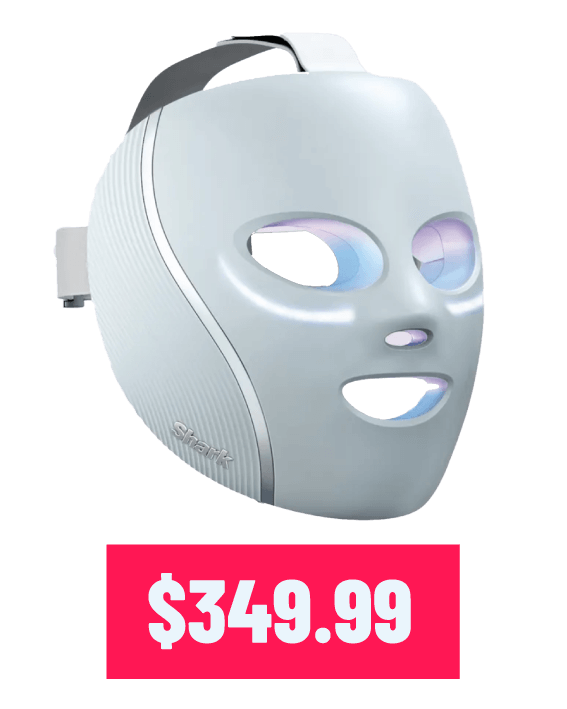 |
128 mW/cm2 |
630nm Red 830nm NIR 419nm Blue |
* “Under eye cooling pads” is a gimmick: This likely just draws power from the RED/NIR LEDs and also means no red light onto the thinnest most vulnerable skin on your face! * “Tricolour LED” is just marketing spin meaning blue light is added - but that means less Red/NIR benefits * Hard shell format means it is unlikely to fit well to your face, meaning decreased radiance delivered to the skin * “Tri-wick LEDs” are a marketing angle that is unproven; this just means one LED can produce multiple types of light (and it may also mean you won’t get Red and NIR at the same time?) * Surprisingly, at 128mW/cm2 maximum radiance is well above what is needed for efficacy and may actually create more Reactive Oxygen Species (ROS) which is counterproductive |
| Current Body LED Light Therapy Face Mask Series 2 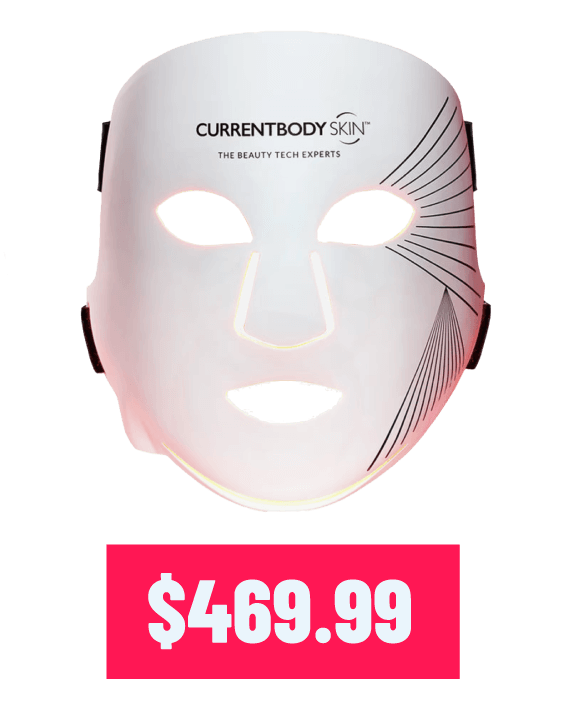 |
30 mW/cm2 |
633nm Red 830nm NIR 1072nm Deep NIR |
* No vertical head strap * Simple head strap format, less fitting options * Price point seems about $100 too high * Science on “Deep NIR” is preliminary * It is admittedly a bonus that it covers some under chin area |
| The Light Salon Boost LED Mask Face Mask Series 2  |
30 mW/cm2 |
633nm Red 830nm NIR |
* Standard level of radiance means it is not set apart in any way from the competition * No vertical head strap * Split nose design means ridge of nose is missed * Customer feedback suggests mat fits loosely on face * Based on market, priced about $150 too high |
| Mirabella Phototherapy 7-Color LED Facial Mask with Near Infrared  |
30 mW/cm2 |
620nm Red 854nm NIR 465nm Blue 560nm Yellow 525nm Green 480nm Cyan 580nm Orange 565nm Purple |
* This mask has an exceptionally poor design, with ‘glasses’ style ear pieces to attach it and oversized ‘goggle’ fittings, it will sit well away from your face, delivering very lower power and ineffective amounts of light * By boasting ‘7 colors’, this mask aims to create an edge on its competition, but this detracts from the quality of light delivered by the most important wavelengths (Red, NIR) + science is very weak on ‘Cyan’, ‘Orange’ and ‘Purple’ wavelengths * Annoying safety goggles are added to the mask, due to the addition of the additional less useful wavelengths |
| Dr. Dennis Gross DRx SpectraLite EyeCare Max Pro 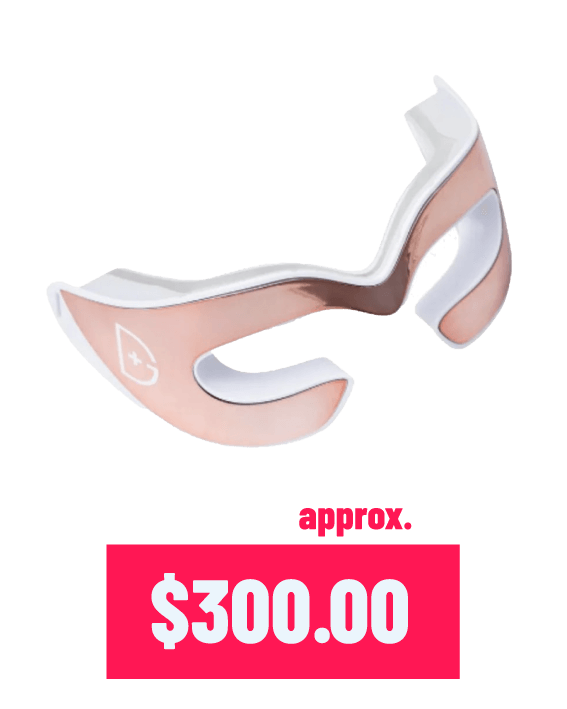 |
Not specified |
“4 wavelengths of red light” but unspecified wavelengths |
* We can stop straight away at this important point: Why pay $199USD for a device that doesn’t treat your entire face when you can get a high quality mask that treats the whole face and the areas targeted by this device for only ~$100-$150 more? * Product information fails to specify the radiance emitted by the device |
| Riki Loves Riki Baby Face  |
~20 mW/cm2 when in Red + NIR mode |
630nm Red 830nm NIR 465nm Blue |
* This device emits low levels of radiance, it is underpowered * No vertical face strap * Only one horizontal strap * User reviews report that it does not lay flat on the face * It includes blue and purple light, which detract from the intensity/quality and therefore benefits of the most important light for younger skin * The USB battery/controller appears to be underpowered and low quality |
| Glow Therapy GlowMax Pro LED Light Therapy Face Mask  |
30 mW/cm2 for Red light NIR unspecified |
630nm Red 850nm NIR 460nm Blue |
* This mask boasts the science of several wavelengths of light (“8 light treatment), but then only includes three. * It also claims to include ‘purple’ light in the mask, but only has a single blue light length wavelength (460nm). Perhaps it is mixing red/blue to create ‘purple’? This is a red flag. * No vertical headstrap, but features the more adjustable format of side straps. However we note very large gaps between the face and mask in their product photos * Mask nose split and layout of LEDs means ridge of nose is missed |
| Luyors Equinox™ Pro LED Mask Face only variant 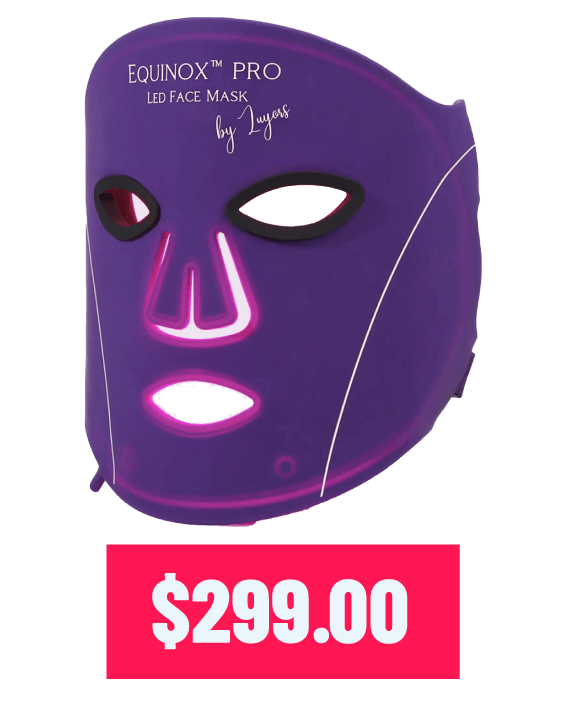 |
30-38 mW/cm2 |
633nm Red 830nm NIR 415nm Blue 590nm Yellow |
* Lacks vertical head strap * This device tries to create differentiation by boasting more LEDs than the competition, but still only sits at the industry norm of ~30mW/cm2 of radiance for red light * Again, we don’t like the nose split as ridge of nose is missed * We’d like to see more options on the controller, given all of the available light settings * There is no proven value to adding yellow light |
| Dr Naomi LED It Glow  |
20-30 mW/cm2 |
630nm Red 830nm NIR |
* Single horizontal strap, meanings limited fit options * No vertical strap * Irradiance values may be lower than industry average |
| Artemis LED Mask & Neck System 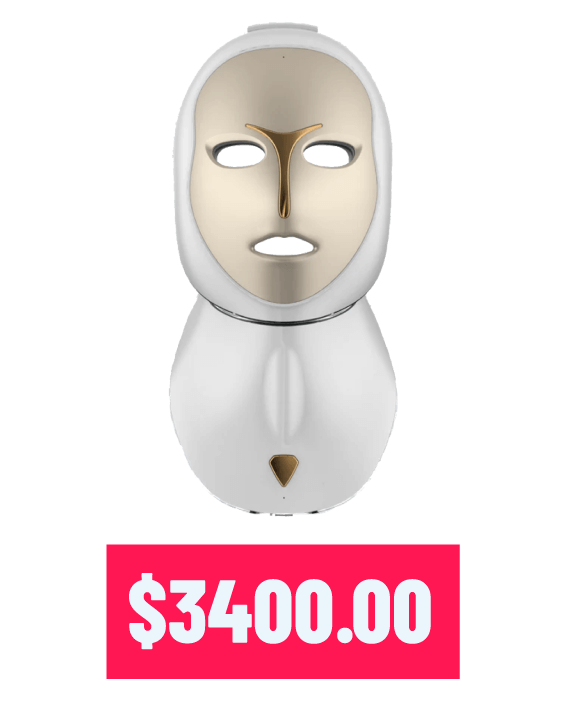 |
45 mW/cm2 |
635nm Red 850nm NIR 470nm Blue 525nm Red 590nm Yellow 520nm Sky Blue |
* Shockingly high price point attempts to be justified by having ‘more LEDs’ than anyone else - this is marketing hype * Remember: What matters is irradiance & fit. * This mask does have very good irradiance, but so does the Boncharge at 10% of the price * Any hard shell mask means less fitting options (and why does every product photo have the model holding the mask on her face?) * Yes it includes neck treatment, but you can easily add that to your mask of choice for ~$200-$300 and still be at 20% of the total price * Extra wavelengths are not meaningful for the aesthetic benefits we’re assessing on |
| Therabody TheraFace Mask  |
75 mW/cm2 |
633nm Red 830nm NIR 415nm Blue |
* Hardshell masks are to be avoided (this mask reportedly does not fit larger faces) * They repeat the “more LEDs is better” mantra * Irradiance values are high, but are also well above recommended upper limits (50mW/cm2) * The addition of vibration therapy is backed up by a single 2013 study in rats… (we’re not joking!) * There is no solid basis for spending the extra $300USD * Irradiance and wavelengths were not clearly reported on the website |
* All prices in USD
Red Light Therapy Frequently Asked Questions (FAQ)
The Top 5 Red Light Therapy Questions - Answered!
1. Do red light therapy masks really work for skin health?
Yes, red light therapy masks can improve skin health by using red (630–660nm) and near-infrared (NIR, 830–850nm) wavelengths to stimulate collagen production, reduce fine lines, and enhance skin clarity. Scientific studies confirm benefits when masks deliver adequate irradiance (20–50 mW/cm²) to the skin, with consistent use (10–20 minutes daily) showing results in 4–8 weeks.
2. What is the most important factor when choosing a red light therapy mask?
The most critical factor is the mask’s fit, ensuring it sits flush against the skin to deliver optimal irradiance (40–50 mW/cm²). A loose fit, even by 1 cm, can reduce irradiance significantly (e.g., from 40 mW/cm² to under 10 mW/cm²), diminishing effectiveness. Look for masks with adjustable U-shaped straps and a vertical forehead strap, like the Bon Charge mask.
3. How does irradiance affect the effectiveness of a red light therapy mask?
Irradiance, measured in mW/cm², is the intensity of light reaching the skin. For anti-aging benefits, the skin needs 20–50 mW/cm². Higher irradiance (e.g., 40 mW/cm²) allows shorter sessions (10 minutes), while lower irradiance requires longer use for similar results. Masks not specifying irradiance or delivering below 20 mW/cm² may be ineffective.
4. Why are red and near-infrared wavelengths important in a red light therapy mask?
Red (630–660nm) and NIR (830–850nm) wavelengths penetrate facial skin (0.5–2 mm thick) to boost cellular energy (ATP), reduce inflammation, and promote collagen synthesis, improving wrinkles and pigmentation. Other wavelengths (e.g., blue, yellow) may dilute the intensity of red/NIR light, reducing anti-aging benefits unless targeting specific issues like acne.
5. How long does it take to see results from a red light therapy mask?
With consistent use (10–20 minutes daily) and proper irradiance (40–50 mW/cm²), most users notice improved skin texture, reduced fine lines, and better clarity within 4–8 weeks. Results vary based on skin type and condition, with some seeing initial glow or firmness in 1–2 weeks. A well-fitted mask maximizes efficacy.
Scientific References
→ Therapeutic Efficacy of Home-Use Photobiomodulation Devices: A Systematic Literature Review
→ Infrared and skin: Friend or foe

